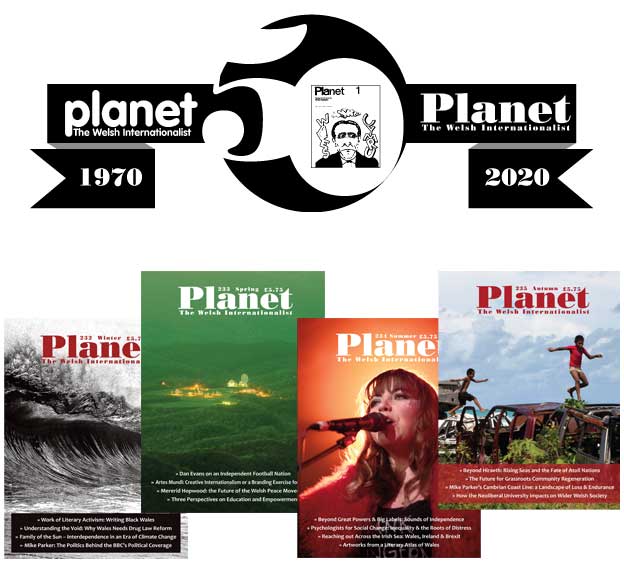
Raging Fires and Raging Protests:
What’s the future for indigenous rights in Bolivia and Chile?
By Lila Haines
Lila Haines addresses the lack of Western media focus on the fate of indigenous peoples in Bolivia and Chile following recent political unrest and repression, and the forest fires of 2019.

Wiphala of Qulla Suyu, official variant flag of Bolivia since 2009 © https://bit.ly/2V1ewf7
Forest fires raging through Amazonia and outbreaks of political rage on the streets of Chile and Bolivia provided the most dramatic images of Latin America in the latter half of 2019. They were reported, if briefly, in the international media, with the focus mainly on immediate events and party political repercussions.
But we heard little about the implications for indigenous peoples, who may be the big losers in the Amazon basin where about a million of them live1, and in Bolivia where hard-won gains may be at high risk.
Amazonia blazingIn August 2019 alone over 30,000 fire outbreaks were recorded in the Brazilian Amazon, an increase of nearly 200% compared to August 2018, the Worldwide Fund for Nature (WWF) reported.2 This ‘huge spike’3 was directly linked to accelerated deforestation, fuelled by a combination of Brazilian President Bolsonaro’s rhetoric and his government’s cuts to controls on logging and burning, according to the WWF.
But fires and rivers don’t stop at borders. The Amazon sprawls across nine countries, and major fires raged across the borders between Brazil, Paraguay and Bolivia. Unlike Brazil’s President Bolsonaro, the then President of Bolivia, Evo Morales, accepted international help to fight them.
It’s tempting to say their opposing reactions symbolised a right-left divide but that might be too simplistic. It may have at least as much to do with their respective positions on the environment and the rights of indigenous communities.
On the most basic level – and taking as read the global environmental harm – the future of indigenous Amazonian communities is bleak: in Brazil their livelihoods and cultural existence are further threatened by developers backed by the Bolsonaro government, and more uncertain in Bolivia where political change may threaten existing protections.
Street rageIn October 2019 anti-government protests exploded unexpectedly in Bolivia and Chile. Unexpectedly, because both countries had seemed to be stable in recent times, if poles apart on some measures, including ethnic make-up. Both are resource-rich, although analysts warn of looming economic challenges.
I found it hard to recognise the streets of Santiago de Chile through thick clouds of teargas. Or those of La Paz or El Alto in Bolivia as they teemed with angry people from both sides of the newly naked political divide ̶ a divide with a strong element of racial polarisation.
Not that I hadn’t seen protests on those streets before.
On my first morning in La Paz in 2013 my taxi had to wait until protesters, mostly women in traditional dress, had marched past. A few days later I thought I’d miss my flight to Amazonia as protesting workers blocked the road to the airport – no problem, it transpired, as planes always wait when there’s a demo. Then came a pension protest: senior citizens marching hundreds of miles to lobby the government, a powerful image that sparked intense debate and ended in victory for the marchers.
Bolivians are pretty rebellious, I concluded. Especially indigenous groups who had honed their tactics over decades of campaigning.
The protests I saw were peaceful, colourful, even stately, but the atmosphere had changed utterly just six years later, and not in a good way.
Inequality: down but not outWhat did the near simultaneous upheavals in Chile and Bolivia have in common? Not a lot at first glance: the centre-right holds power in Chile whereas Bolivia had a leftist government that promoted indigenous rights. But look more closely and common factors emerge, including recent histories of dictatorship and deep inequalities.
Chile is one of the richest but also most unequal of Latin America countries, despite former President Michelle Bachelet’s reforms (she was in power 2006-11 and 2014-18), which included widening access to education and promoting the rights of the mainly Mapuche indigenous people.
A rise in metro fares triggered a revolt by Santiago students – perhaps those poorer students who can now access higher education. This unleashed pent-up frustrations about pay, pensions and inequality in general, problems only partially eased by Bachelet’s reforms.
In Bolivia, Evo Morales’ insistence on running for a fourth term as president provided a focus for festering discontent that an opposition desperate for a breakthrough exploited to the full. The flashpoint came when the electoral commission froze election count updates for nearly a day and Morales was heading for outright victory when they resumed, sparking allegations of rigging.
Some Bolivians told me back in 2013 that Morales was losing popularity, and that his mistake was to take for granted the social movements that had supported him. Hardly an original political error but one that can’t have helped his 2019 campaign.
Yet it was not unreasonable to think he could win again despite waning popularity: he took 61% of the vote in 2014, having won 54% in 2005 and 64% in 2009. And his Movimiento al Socialismo (MAS) government could point to considerable progress, cultural as well as social and economic, during his time in office.
Radical constitutionIn 2009 a new constitution declared Bolivia a ‘Plurinational’ republic and put all thirty-six of the country’s indigenous languages on a par with Spanish. It accorded the same constitutional status to the environment as to people, linking it with the age-old centrality of Pachamama, the Andean Mother Earth deity. The Wiphala, the pan-Andean indigenous emblem, became a second national flag.
Bolivians repeatedly told me that indigenous peoples and the poor overall had gained in real terms too. Even the disillusioned or disappointed cited the positive effects of social reforms like universal non-contributory pensions and maternity pay for women in both the formal and informal economies. The International Monetary Fund and the Inter-American Development Bank back the anecdotal evidence with data.
Shortly before the 2019 election the Centre for Economic and Policy Research in Washington DC stated that Bolivia ‘has been successful by standard economic measures, and with a broader social and economic development model, it has reduced poverty and extreme poverty, inequality, and external dependencies’.4
21st century progressIt wasn’t just in Bolivia that Amerindian peoples made gains in the early twenty-first century. Many countries legislated to protect their rights, which a World Bank report attributed to ‘the tenacity of their social movements’.5 They gained ‘large influence’ in the political life of Bolivia and Ecuador ‘and in smaller proportions in countries such as Venezuela, Colombia, and Nicaragua’.6
Poverty levels declined in Peru and Bolivia, and the proportion living in extreme poverty was reduced in Bolivia, Brazil, Chile, Ecuador and Peru.7 But nearly half the indigenous populations of Latin America still live in poverty, more than twice the proportion of non-indigenous people. World Bank data ‘provides unambiguous evidence that indigenous peoples fare worse on most accounts, independently from other factors’.8
Two contrasting stories emerge: important gains but persistent exclusion ‘which still limits their ability to contribute to and profit from the benefits of the state without renouncing their cultures and identities’.9
The Bolivian modelUnsurprisingly, many beyond Bolivia’s borders saw Evo Morales Ayma’s 2005 presidential victory as a pivotal political moment. It was the culmination of a decades-long struggle involving a broad coalition of social movements, indigenous rights groups and, significantly, the coca growers’ union led by Morales.
This kind of struggle wasn’t unique to Bolivia, but it was the most successful. What followed included an interesting twist on the usual leftist approach to radical change.
Morales’ most significant economic move was what’s been termed ‘nationalisation without expropriation’ ̶ renegotiating contracts with hydrocarbons companies in what amounted to a total reversal of the prior low taxation deal. By maximising revenues from natural gas and oil his government could fund its anti-poverty agenda and ambitious development plans.
It was also an astute way for this sprawling landlocked country to work around geographical and geopolitical constraints: ‘the Morales government created a more socially stable investment environment that has been beneficial for greater segments of the Bolivian population and potentially for transnational investors’, the academic Brent Z. Kaup claimed.10
However, as the IMF warned, ‘after years of impressive growth and poverty reduction’ Bolivia was entering a more challenging period11 in which falling hydrocarbon revenues would hit its ability to fulfil its development plans.12 Tough decisions loomed: cutting public spending would stunt social progress but slapping yet higher taxes on the hydrocarbons sector could be counterproductive.
Election upheavalWith Bolivia approaching a crossroads, if not immediately, then soon, the October 2019 presidential election was certain to be fiercely fought. When the fuse was lit it unleashed what some claim were well-planned attacks from the right, and inevitable retaliation.
At least thirty-six people died at the hands of security forces and in clashes between opponents and supporters of Morales. Racist slogans appeared and cultural symbols entered the fray: protesters on the right burned the Wiphala, police tore it from their uniforms. Morales resigned and went into exile, alleging a coup.
An interim president, Jeanine Áñez, is cracking down on opposition and the media, has expelled Mexican, Spanish and Venezuelan diplomats and Cuban doctors, broken diplomatic relations with Cuba and Venezuela and dismantled controls on agricultural exports.
What next?What will happen next is hard to predict. Will the campaign crystallise into a class or culture war: rich versus poor, elite whites versus indigenous?
Morales will not contest the fresh elections announced for May 2020. The battle may be three-sided, between his MAS party candidate, his former centre-right rival Carlos Mesa, and Luis Camacho who led a fiery anti-Morales campaign in the post election clashes, though Jeanine Áñez fancies her chances too
Some commentators say Camacho has pushed Mesa into increasingly extreme positions.13 Economic change could be rapid, including ending the ‘nationalisation without expropriation’ of hydrocarbons and thus eroding funding for development and anti-poverty programmes.
What might a right-wing electoral pact or coalition government mean for hard-won indigenous gains?
Constitutional changes are likely. Some of the newly prominent leaders on the right want to overturn the status accorded to indigenous beliefs and culture: interim president Áñez is said to have branded Aymara beliefs as ‘satanic’. Camacho has declared his desire to ‘bring the Bible back to the palace of government’.14
Way out east in Bolivia’s Amazon region the scattered indigenous communities may be more immediately concerned about fires and floods than politics, but for them the need for environmental protections is very urgent indeed.
Stability looks elusive. Even under perfect conditions and with the fairest of elections, it’s hard to see how the angrily divided factions can reconcile their differences. The extent to which the US gets involved – and Trump has announced he will send aid – could determine how difficult the situation will become.
Indigenous movements across the region are probably hoping none of these scenarios are inevitable and there are some glimmers of hope. In parliament the MAS Senator Eva Copa persuaded her party to work with conservative politicians to plan new elections.15 Reports say old political alliances are splitting and new leaders and forces emerging as local leaders work together to find ways forward. In the mainly indigenous city of El Alto, for example, grassroots MAS supporters are grasping the opportunity to bring the party’s focus back to economic inequalities and to restructure the party. It remains to be seen if such actions can have a restraining influence on national politicians.
As for Chile, the political classes have been shocked into agreeing initiatives on pay, health, education and the failing privatised pension schemes. A referendum on a new, participatory constitution is planned. Protests continue, some violent, others imaginative such as the feminist performance protest against sexual violence, ‘Un violador en tu camino’ (‘A Rapist in Your Path’),16 since taken up by women globally.
One voice remains unheeded: that of indigenous Chileans. Mapuche activists toppled statues of Conquistadores and their flag flies in protests. But at just 10% of the population, mainly in the south, and with powerful timber and energy companies exploiting their lands, their demands are the least likely to succeed.
- 1: https://www.survivalinternational.org/about/amazontribes.
- 2: https://www.wwf.org.uk/updates/amazon-fires-update.
- 3: ibid
- 4: Andrés Arauz, Mark Weisbrot, Andrew Bunker and Jake Johnston, ‘Bolivia’s Economic Transformation: Macroeconomic Policies, Institutional Changes and Results’, A Report for the Center for Economic and Policy Research (October 2019) https://cepr.net/report/bolivia-s-economic-transformation-macroeconomic-policies-institutional-changes-and-results/.
- 5: http://documents.worldbank.org/curated/en/145891467991974540/Indigenous-Latin-America-in-the-twenty-first-century-the-first-decade.
- 6: ibid
- 7: ibid
- 8: ibid
- 9: Brent Z. Kaup, ‘Powering up: Latin America's energy challenges: Bolivia’s nationalised natural gas: social and economic stability under Morales’, LSE Research Online (2010) http://eprints.lse.ac.uk/43676/.
- 10: ibid
- 11: IMF Press Release No.18/453, December 6, 2018, IMF Executive Board Concludes 2018 Article IV Consultation with Bolivia
- 12: Yehenew Endegnanew and Dawit Tessema, ‘Public Investment in Bolivia: Prospects and Implications’, IMF Strategy, Policy, and Review Department, 12 July 2019
- 13: ‘The coup against Evo Morales was premeditated’ New Internationalist, 18 November 2019
- 14: Ciara Nugent, ‘How Bolivia's Evo Morales Was Brought Down With the Help of an Obscure Conservative With a Bible’, Time magazine (15 November 2019) https://time.com/5728279/luis-fernando-camacho-bolivia/.
- 15: ‘The current calm in Bolivia is fragile’, The Economist, 23 January 2020
- 16: https://en.wikipedia.org/wiki/A_Rapist_in_Your_Path.
If you appreciated this article, you can read longer articles on a wide range of topics in Planet magazine, and you can buy Planet here.

“Since its inception almost half a century ago, Planet has consistently pushed our boundaries of discourse. It has challenged, provoked and inspired, and always remained true to its own subhead (‘The Welsh Internationalist’) by placing our small country in far wider contexts. In a world where so many are hell-bent on building barriers and narrowing horizons, we need it now more than ever.” - Mike Parker, author.
You can contribute to Planet's future following successive cuts to our funding by taking out a Supporters' Subscription. Our new Supporters’ Subscription packages include a range of exclusive products, benefits and reading experiences drawing on nearly 50 years of Planet's history. For more information please click here.
About the author
Lila Haines is an Irish freelance journalist and independent researcher based in Cardiff. Her work has taken her to several Latin American countries including Bolivia and Chile.
If you liked this you may also like:
Cymru, yes?
In the lead up to the General Election, poet Patrick Jones gives the case for why independence for Wales is the only way out of our current malaise of austerity, hopelessness and xenophobia, and celebrates the people and historical movements that have inspired his stance.
Planet Video: Blacklisted
In 2013, The Dragon Has Two Tongues director Colin Thomas wrote an article for Planet entitled ‘From Blacklist to Oscar Shortlist: Paul Turner, MI5 and the BBC’ on how the career of Hedd Wyn director Paul Turner had been affected by political blacklisting within the BBC, and examined whether blacklisting continues to blight the UK media.
Planet at 50: A Celebratory Event Hosted by the National Library of Wales
In 2020, Planet celebrated 50 years as Wales' liveliest cultural and political periodical. Watch this video of founding editor Ned Thomas and current editor Emily Trahair in conversation with author Mike Parker at this event from December 2020 to see what's changed, what hasn't, and why a publication subtitled 'The Welsh Internationalist' is needed now more than ever
